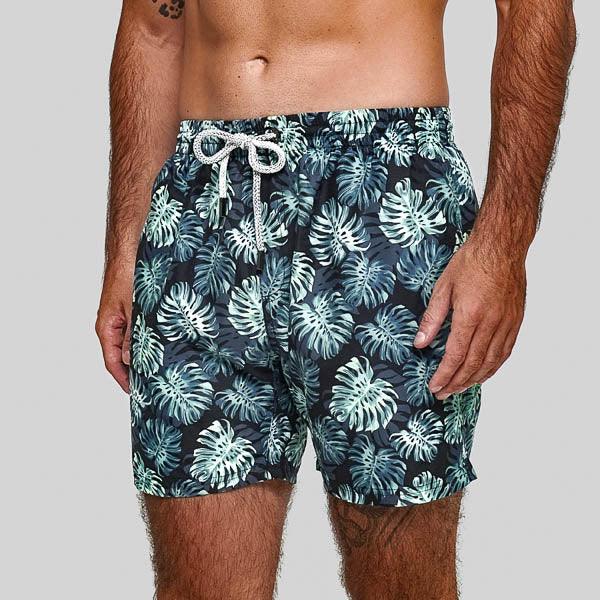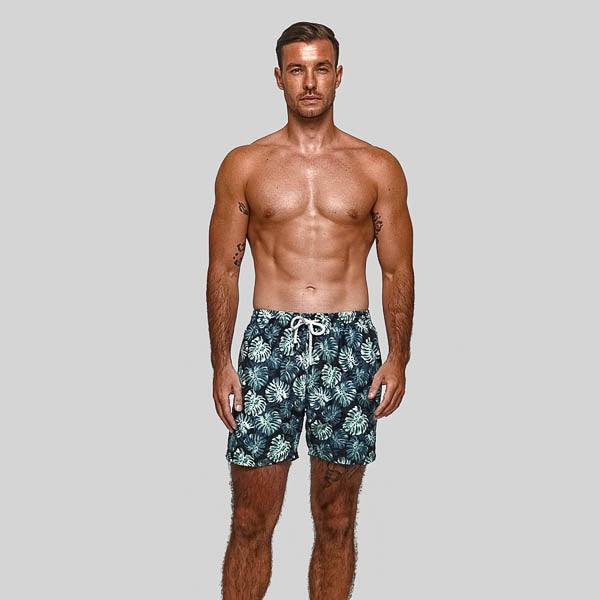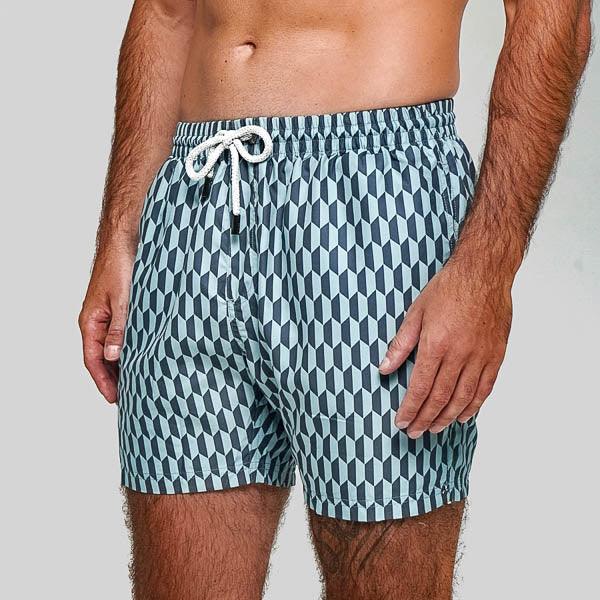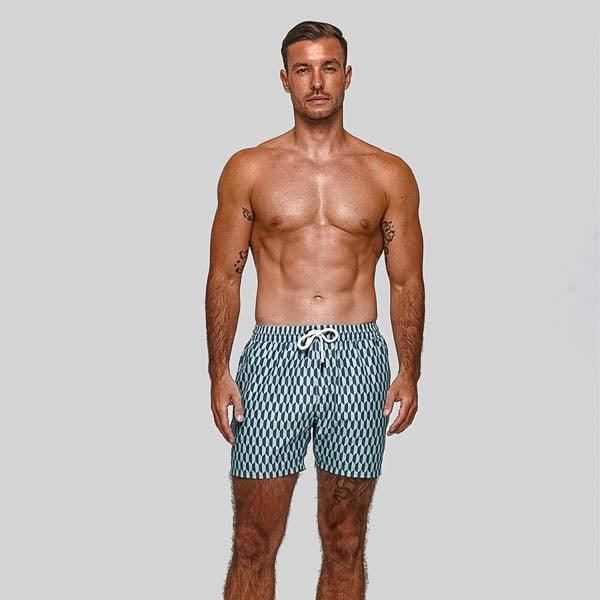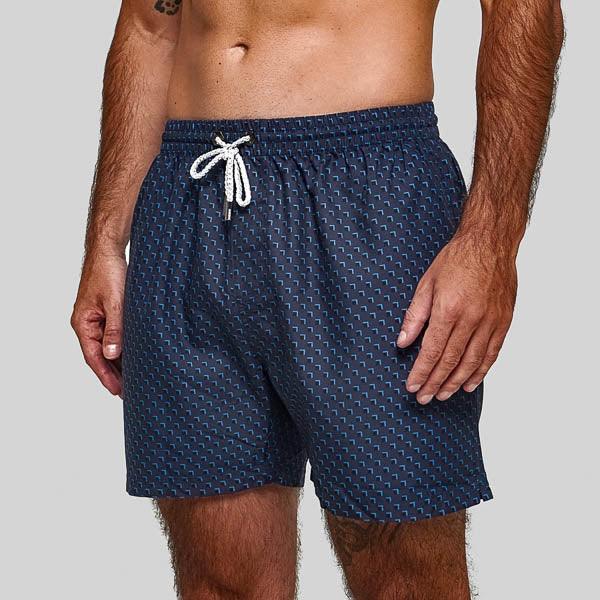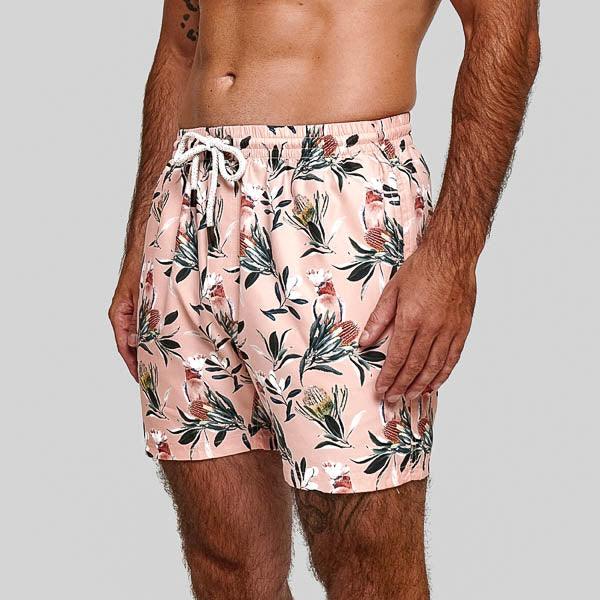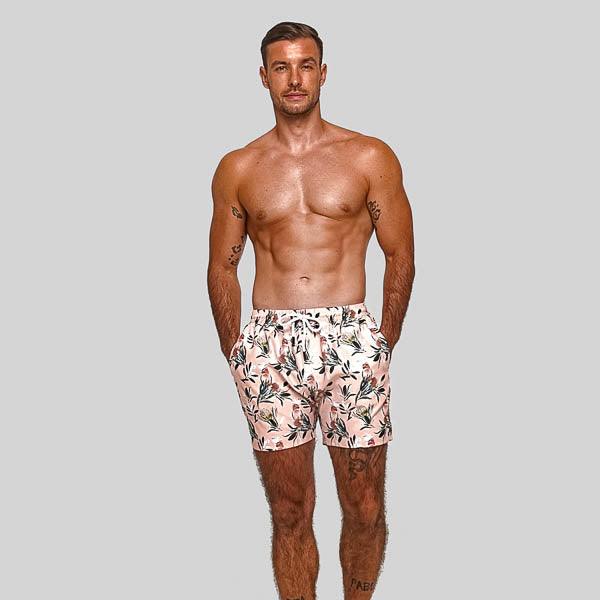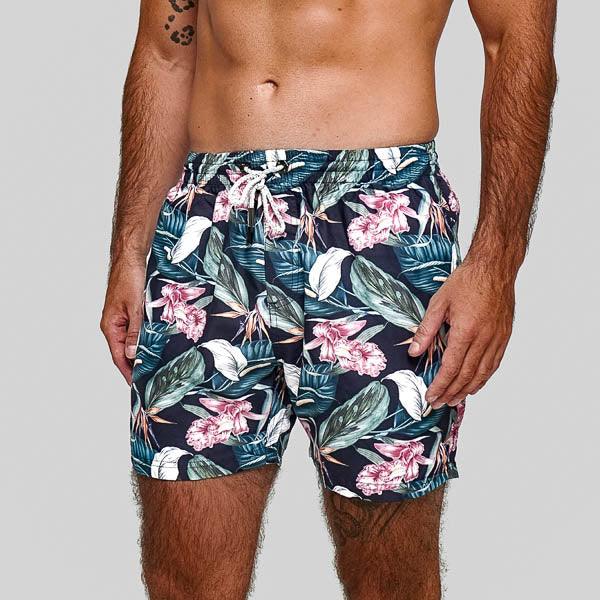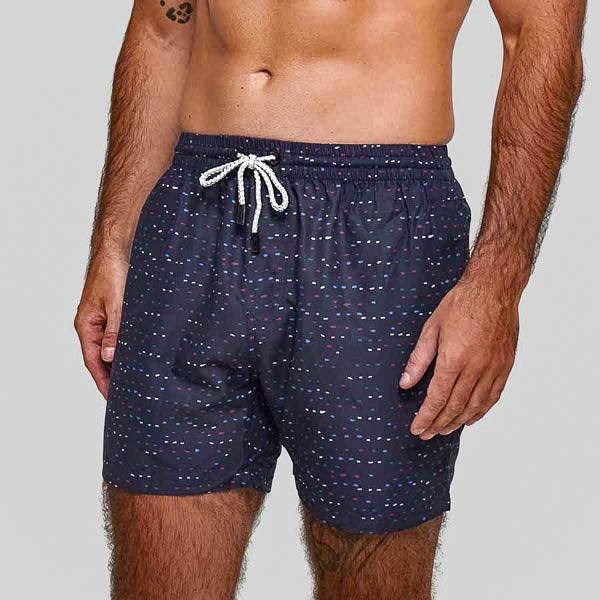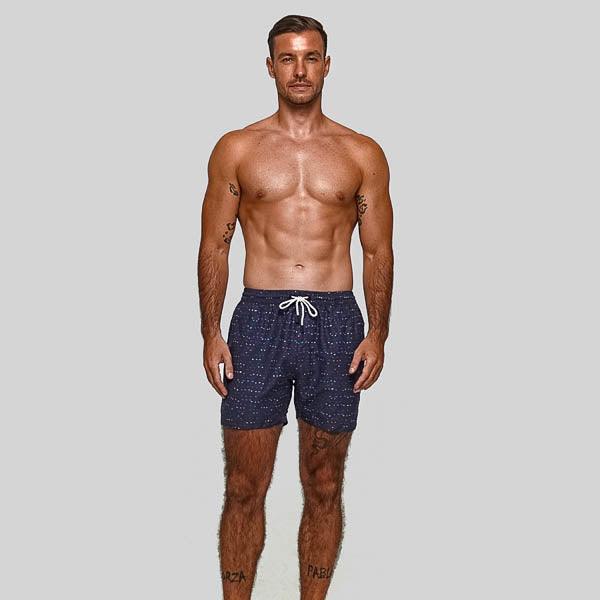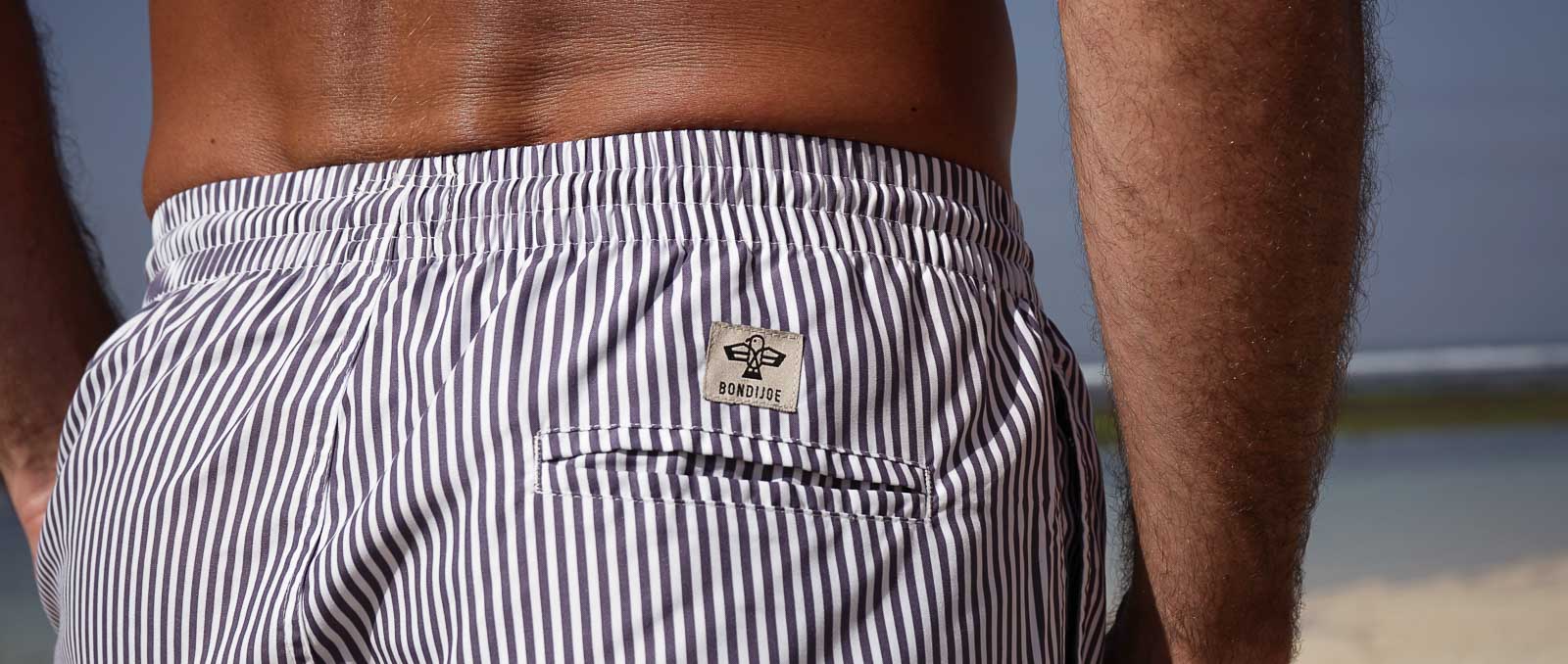Choosing the right swimwear is crucial for a comfortable and enjoyable experience at the beach or pool. Among the many factors that contribute to swimwear comfort, fabric plays a significant role. The fabric of men's swim trunks can impact everything from fit and flexibility to drying time and durability. In this comprehensive guide, we will explore the impact of fabric on men's swim trunk comfort, providing you with the knowledge to make informed decisions for your next swimwear purchase.
Understanding the Importance of Fabric in Swimwear
Why Fabric Matters
The fabric of swim trunks affects their overall performance and comfort. Key aspects influenced by fabric choice include:
- Breathability: Ensures proper airflow and reduces overheating.
- Flexibility: Allows free movement without restriction.
- Durability: Withstands wear and tear from water, sun, and salt.
- Drying Time: Quick-drying fabrics enhance comfort after swimming.
Common Fabrics Used in Men's Swim Trunks
Several types of fabrics are commonly used in men's swimwear, each with unique properties:
- Polyester
- Nylon
- Spandex/Elastane
- Polyester Blends
- Recycled Materials
Polyester: The Popular Choice
Characteristics of Polyester
Polyester is a widely used fabric in swimwear due to its durability and quick-drying properties. Key features include:
- Water-Resistant: Does not absorb much water, reducing drying time.
- Durable: Resists wear and tear from chlorine and saltwater.
- UV Protection: Often treated to provide protection against UV rays.
Benefits of Polyester Swim Trunks
Polyester swim trunks offer several advantages:
- Long-Lasting: Retains shape and color even after repeated use.
- Quick-Drying: Ideal for frequent swimmers who need their trunks to dry quickly.
- Affordable: Generally less expensive than other materials.
Drawbacks of Polyester
Despite its benefits, polyester has some drawbacks:
- Less Stretch: May not offer the same level of flexibility as other fabrics.
- Potential for Pilling: Can develop small fabric balls with extensive use.
Nylon: Lightweight and Flexible
Characteristics of Nylon
Nylon is another popular fabric in men's swimwear, known for its lightweight and flexible nature. Key features include:
- Lightweight: Feels light and comfortable against the skin.
- High Stretchability: Provides excellent flexibility for active movement.
- Quick-Drying: Similar to polyester, it dries quickly after getting wet.
Benefits of Nylon Swim Trunks
Nylon swim trunks are favored for several reasons:
- Comfortable Fit: Offers a soft, smooth feel that is gentle on the skin.
- Flexibility: Ideal for water sports and activities requiring a full range of motion.
- Breathability: Allows for better airflow, keeping you cool.
Drawbacks of Nylon
While nylon is advantageous, it has some limitations:
- Less Durable: May not withstand chlorine and saltwater as well as polyester.
- Color Fading: Prone to fading with prolonged exposure to sunlight and water.
Spandex/Elastane: The Stretch Factor
Characteristics of Spandex
Spandex, also known as elastane, is often blended with other fabrics to provide stretch. Key features include:
- High Stretch: Offers exceptional flexibility and comfort.
- Form-Fitting: Provides a snug, supportive fit.
- Elastic Recovery: Maintains its shape after stretching.
Benefits of Spandex Blends in Swim Trunks
Blending spandex with other materials enhances swim trunks:
- Enhanced Mobility: Allows for unrestricted movement, perfect for active swimmers.
- Comfort: Adapts to body shape, providing a comfortable fit.
- Support: Offers additional support, particularly in competitive swimwear.
Drawbacks of Spandex
There are some downsides to spandex blends:
- Less Durable: Can wear out faster than polyester or nylon.
- Higher Maintenance: Requires careful washing and drying to maintain elasticity.
Polyester Blends: The Best of Both Worlds
Characteristics of Polyester Blends
Polyester blends combine polyester with other fabrics, like spandex, to create a balanced material. Key features include:
- Durability and Stretch: Offers both the durability of polyester and the stretch of spandex.
- Quick-Drying and Flexible: Dries quickly while providing flexibility for movement.
- Comfortable Fit: Adapts to the body, enhancing overall comfort.
Benefits of Polyester Blends in Swim Trunks
Polyester blends are popular for several reasons:
- Versatility: Suitable for various activities, from casual swimming to competitive sports.
- Enhanced Performance: Provides a good balance of stretch, durability, and quick-drying properties.
- Comfort: Ensures a comfortable fit without sacrificing performance.
Drawbacks of Polyester Blends
Despite their advantages, polyester blends have some limitations:
- Cost: Can be more expensive than pure polyester or nylon.
- Maintenance: Requires careful washing to maintain fabric integrity.
Recycled Materials: Eco-Friendly Options
Characteristics of Recycled Materials
Recycled materials are becoming increasingly popular in swimwear for their environmental benefits. Key features include:
- Sustainability: Made from recycled plastics and other materials.
- Durability: Often comparable to virgin materials in terms of performance.
- Environmental Impact: Reduces waste and promotes sustainability.
Benefits of Recycled Material Swim Trunks
Recycled swim trunks offer multiple advantages:
- Eco-Friendly: Supports environmental conservation efforts.
- Performance: Often matches or exceeds the performance of traditional materials.
- Unique Designs: Often feature distinctive, eco-conscious branding and designs.
Drawbacks of Recycled Materials
There are some challenges with recycled materials:
- Availability: Not as widely available as traditional materials.
- Cost: Can be more expensive due to the recycling process.
How to Choose the Right Fabric for Swim Trunk Comfort
Assessing Your Needs
Consider your specific needs when choosing swim trunk fabric:
- Activity Level: Higher activity levels may require more flexible and durable materials.
- Water Environment: Chlorinated pools vs. saltwater environments can impact fabric choice.
- Personal Comfort: Preferences for softness, stretch, and fit.
Comparing Fabric Options
Use a comparison table to evaluate different fabrics:
| Fabric Type | Durability | Flexibility | Quick-Drying | Comfort | Best For |
|---|---|---|---|---|---|
| Polyester | High | Moderate | High | Moderate | Frequent swimmers |
| Nylon | Moderate | High | High | High | Active swimmers |
| Spandex Blends | Low | Very High | Moderate | High | Competitive swimmers |
| Polyester Blends | High | High | High | High | Versatile use |
| Recycled Materials | Moderate | Moderate | Moderate | High | Eco-conscious consumers |
Tips for Maintaining Swim Trunk Comfort
Proper Care and Maintenance
Proper care extends the life and comfort of your swim trunks:
- Rinse After Use: Always rinse in fresh water to remove chlorine or salt.
- Hand Wash: Use mild detergent and avoid harsh chemicals.
- Air Dry: Lay flat to dry in a shaded area, avoiding direct sunlight.
Storage Tips
Store your swim trunks properly to maintain their shape and comfort:
- Fold Neatly: Avoid crumpling to prevent wrinkles and damage.
- Cool, Dry Place: Store in a well-ventilated area away from direct sunlight.
Conclusion
The fabric of men's swim trunks plays a pivotal role in ensuring comfort and performance. By understanding the characteristics and benefits of different materials, you can select swim trunks that meet your specific needs and preferences. Whether you prioritize durability, flexibility, quick-drying properties, or eco-friendliness, the right fabric can enhance your swimming experience. Proper care and maintenance will also ensure your swim trunks remain comfortable and functional for many seasons to come. Read more guides to mens swim trunk comfort and fit.
FAQs
What fabric is best for men's swim trunks?
Polyester and nylon are popular choices due to their durability and quick-drying properties, while spandex blends offer superior flexibility.
How do I care for my swim trunks to maintain comfort?
Rinse after use, hand wash with mild detergent, and air dry to maintain fabric integrity and comfort.
Are recycled materials a good option for swim trunks?
Yes, recycled materials are eco-friendly and often provide comparable performance to traditional fabrics.
Why is the fabric of swim trunks important?
Fabric affects breathability, flexibility, durability, and drying time, all of which contribute to overall comfort.
Can I use regular detergent to wash my swim trunks?
It's best to use mild detergent to prevent damage to the fabric and maintain comfort.
What should I consider when choosing swim trunk fabric?
Consider your activity level, water environment, and personal comfort preferences to choose the best fabric for your needs.



